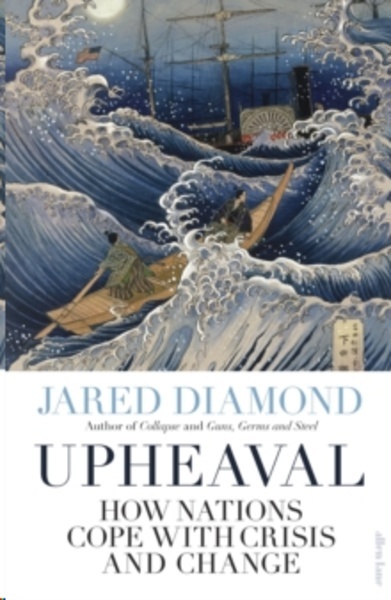Upheaval : How Nations Cope with Crisis and Change

Editorial Penguin UK
Fecha de edición diciembre 2019 · Edición nº 1
Idioma inglés
EAN 9780241003398
512 páginas
Libro
encuadernado en tapa dura
Resumen del libro
*FEATURED IN BILL GATES'S 2019 SUMMER READING RECOMMENDATIONS* *A NEW YORK TIMES BESTSELLER*'A riveting and illuminating tour of how nations deal with crises - which might hopefully help humanity as a whole deal with our present global crisis' Yuval Noah Harari, author of Sapiens In his landmark international bestsellers Guns, Germs and Steel and Collapse, Jared Diamond transformed our understanding of what makes civilizations rise and fall. Now, at a time when crises are erupting around the world, he reveals what makes certain nations resilient in the face of tremendous upheaval. In a riveting journey into the recent past, he traces how six countries have survived defining catastrophes - from the forced opening of Japan to the Soviet invasion of Finland to Chile's brutal Pinochet regime - through selective change, a coping mechanism more commonly associated with personal trauma.
He identifies unique patterns in the way that these distinctive modern nations - all countries in which he has lived - have recovered from these upheavals. Looking ahead to the gravest threats we face in the future, he investigates the risk that the United States, and the world, are squandering their natural advantages and are on a devastating path towards catastrophe. Is this fate inevitable? Or can we still learn from the lessons of the past?Adding a psychological dimension to the in-depth history, geography, biology, and anthropology that mark all of Diamond's books, Upheaval reveals the factors that influence how both nations and individuals can respond to enormous challenges.
The result is a book epic in scope, but also his most personal yet.
Biografía del autor
x{0026}lt;P x{0026}lt;B Jared Diamondx{0026}lt;/B (1937) es catedrático de geografía en la Universidad de California (UCLA). Comenzó su actividad científica en el campo de la fisiología evolutiva y la biogeografía. Ha sido elegido miembro de la Academia de Artes y Ciencias, de la Academia Nacional de Ciencias y de la Sociedad Filosófica de Estados Unidos, y ha recibido una beca de investigación de la Fundación MacArthur, además de los premios Burr de la Sociedad Geográfica Nacional y Pulitzer de 1998 por x{0026}lt;I Armas, gérmenes y acerox{0026}lt;/I (1997).x{0026}lt;/P x{0026}lt;P Ha publicado más de seiscientos artículos en las revistas x{0026}lt;I Discoverx{0026}lt;/I , x{0026}lt;I Natural Historyx{0026}lt;/I , x{0026}lt;I Nature y Geox{0026}lt;/I . También es autor de x{0026}lt;I El tercer chimpancéx{0026}lt;/I (1994), x{0026}lt;I ¿Por qué es divertido el sexo?x{0026}lt;/I (1999), x{0026}lt;I Colapso x{0026}lt;/I (2006), x{0026}lt;I El mundo hasta ayerx{0026}lt;/I (2013) y x{0026}lt;I Sociedades comparadasx{0026}lt;/I (Debate, 2016) grandes éxitos que han obtenido, además, numerosos galardones.x{0026}lt;/P








